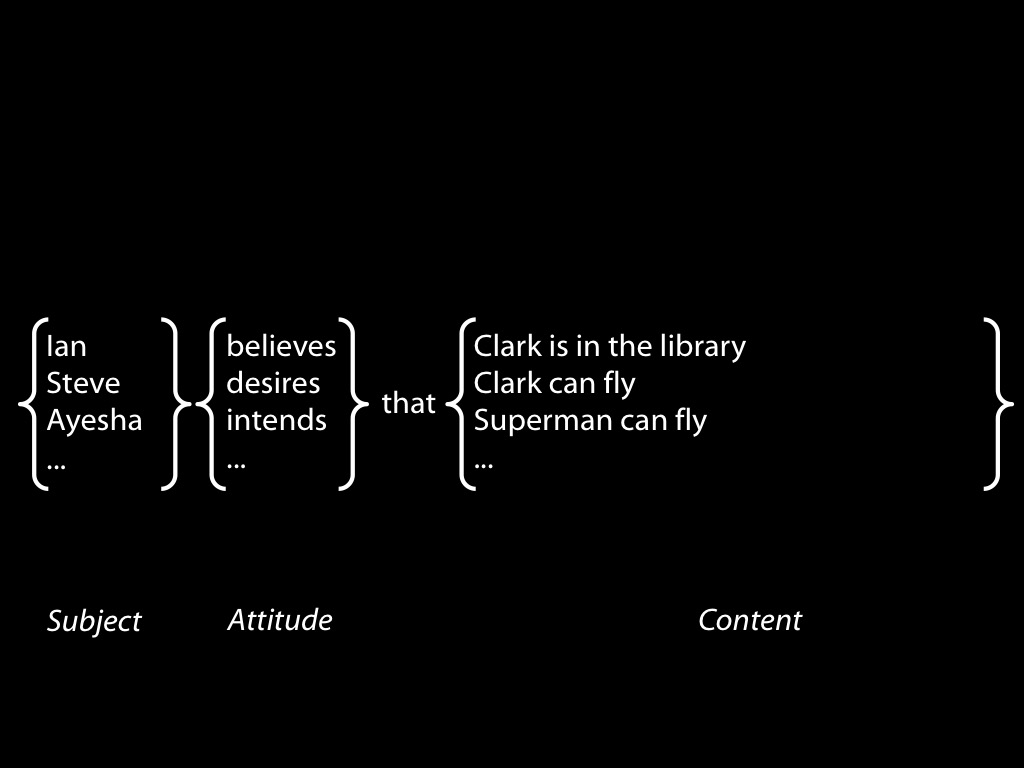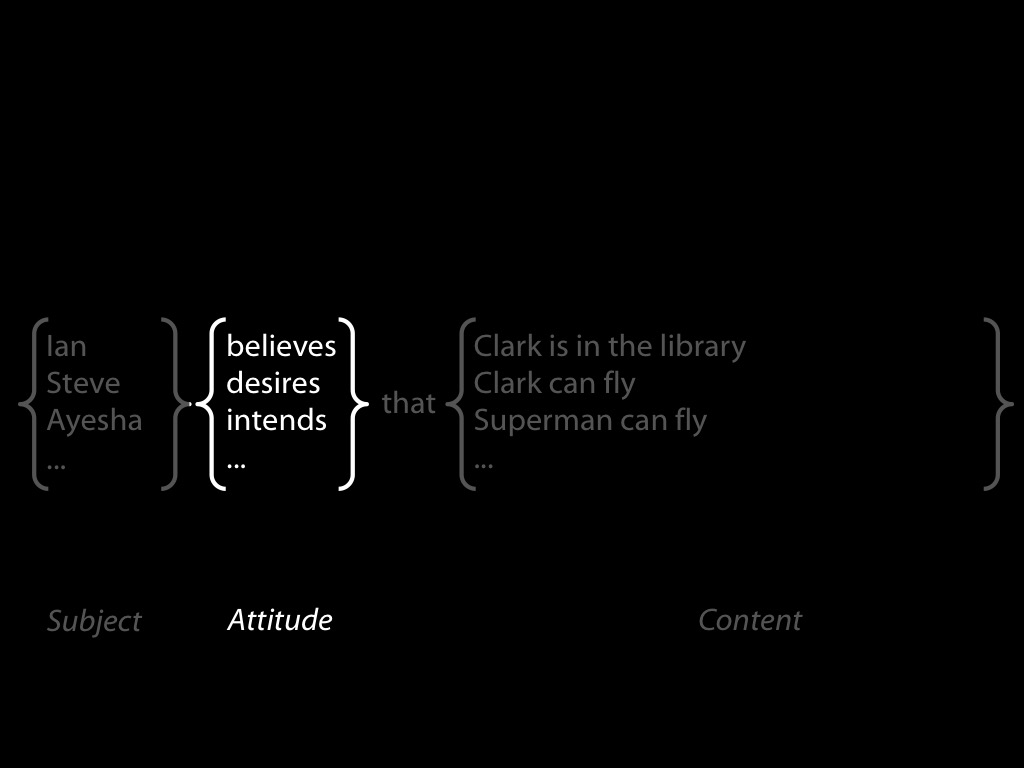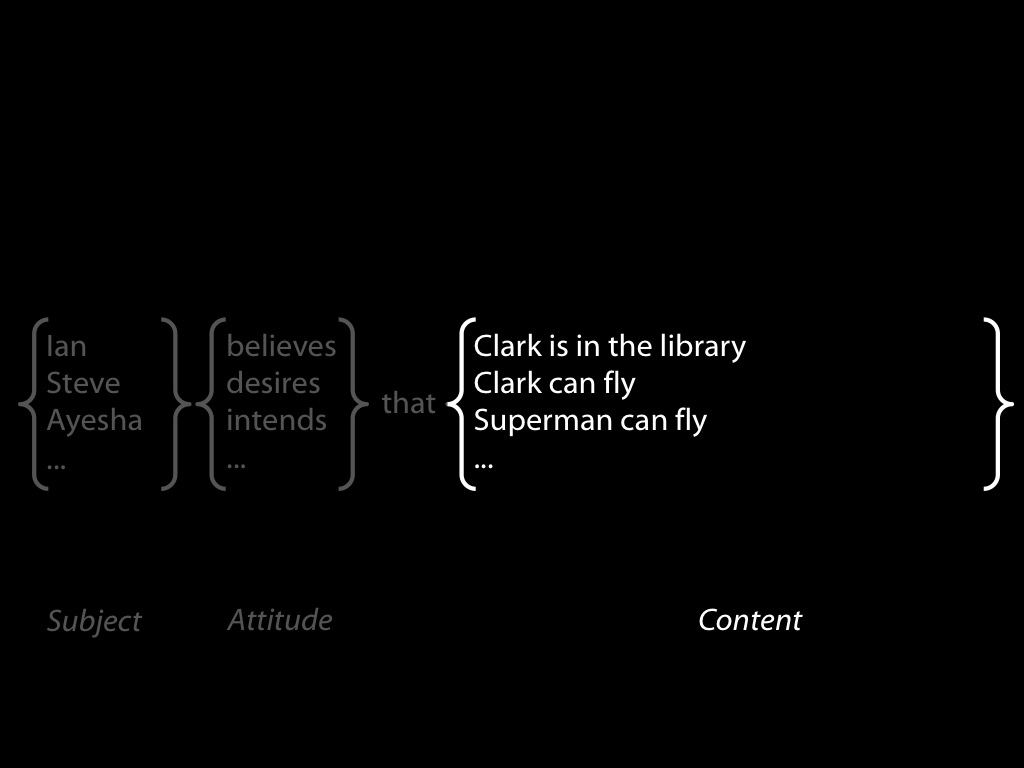Click here and press the right key for the next slide (or swipe left)
also ...
Press the left key to go backwards (or swipe right)
Press n to toggle whether notes are shown (or add '?notes' to the url before the #)
Press m or double tap to slide thumbnails (menu)
Press ? at any time to show the keyboard shortcuts

How can we acquire knowledge about the essential nature of the bodies located outside us?
So far ...
- Not by sensory perception alone
- sensory perceptions do not resemble (The World)
- argument from doubt (Meditation 1)
- There is a nonsensory route to knowledge that I exist,
which provides a ‘first principle’
‘The main reason why we can find nothing in ordinary philosophy which is so evident and certain as to be beyond dispute
is that students of the subject first of all are not content to acknowledge what is clear and certain,
but on the basis of merely probably conjectures venture also to make assertions on obscure matters about which nothing is known;
they then gradually come to have complete faith in these assertions, ...
The result is that the only conclusions they can draw are ones which apparently rest on some such obscure proposition, and which are accordingly uncertain.’
Rules for the Direction of the Mind, p. 14
‘in practical life
it is sometimes necessary to act upon opinons which one knows to be quite uncertain just as if they were indubitable’
Discourse on Method
In devoting ‘myself soley to the search for truth
... I resolved to
pretend
that all the things that had ever
entered my mind were no more true
that the illusions of my dreams’
Discourse on Method

I Exist
‘I noticed that while I was trying thus to think everything false
it was necessary that I,
who was thinking this,
was something.’
‘this truth
“I am thinking, therefore I exist”
[is] so firm and sure
that all the most extravagant suppositions of the sceptics [are] incapable of shaking it’
I took it as ‘the first principle’.
Discourse on Method
1. What precisely, is concluded?
That something exists?
That a mind exists?
That a temporally-extended mind exists?
2. How is the conclusion established?
Is there an argument? If so, what is the argument?
3. What is the function of this conclusion in Descartes’ philosophy?
(Descartes: I took it as ‘the first principle’.)



“I am thinking, therefore I exist”
Conclusion 1 : something exists
“it is certain that a thought cannot exist without a thing that is thinking, and that in general no act or accident can exist without a substance to inhere in”
Conclusion 2 : a substance exists
Limit : These conclusions are consistent with the world being momentary.
Two thoughts occur in succession. In fact they are thoughts of the same subject. Could Descartes’ argument ever allow him to conclude that the thoughts have a common subject?
‘We clearly understand that it is possible for me to exist at this moment, while I am thinking of one thing, and yet not to exist at the very next moment’
For Arnauld, 4 June 1648
Could your thinking continue after you have ceased to exist?
‘He had believed once that he would be formed by the architecture of war, but now, he realized, he had been erased by it.’
Margret Atwood, A God in Ruins
‘It could be said that in the chaos of combat, the man known as Satch Dodd ceased to exist, even to himself; and when the dust cleared, and he found himself still standing, he experienced a rush of raw existence, as if he’d been shot from a cannon back into the world.’
Justin Cronin, The Twelve
1. What precisely, is concluded?
That something exists?
That a mind exists?
That a temporally-extended mind exists?
2. How is the conclusion established?
Is there an argument? If so, what is the argument?
3. What is the function of this conclusion in Descartes’ philosophy?
(Descartes: I took it as ‘the first principle’.)
“I am thinking, therefore I exist”
There is thinking.
Therefore a thought exists.
If a thought exists, its subject also exists.
Whatever I am, I am that subject.
And I am capable of thinking.
“I am thinking, therefore I exist”
There is thinking.
Therefore a thought exists.
If a thought exists, its subject also exists.
Whatever I am, I am that subject.
And I am capable of thinking.
“I am breathing, therefore I exist”
There is breathing.
Therefore a breath exists.
If a breath exists, its agent also exists.
Whatever I am, I am that agent.
And I am capable of breathing.
‘When someone says “I am thinking, therefore I am, or I exist,” he does not deduce existence from thought by means of a syllogism, but by a simple intuition of the mind.
This is clear from the fact that if he were deducing it by a syllogism, he would previously have had to know the major premise “Everything that thinks is, or exists”
yet in fact he learns this from experiencing in his own case that it is impossible that he should think without existing.’
Second Replies
‘... the truth of the proposition 'I am thinking, therefore I exist.' Now this knowledge is not the work of your reasoning
[...] it is something that your mind sees, feels and handles; [...] although your imagination insistently mixes itself up with your thoughts and lessens the clarity of this knowledge by trying to clothe it with shapes
Letter to Silhon, 1648
1. What precisely, is concluded?
That something exists?
That a mind exists?
That a temporally-extended mind exists?
2. How is the conclusion established?
Is there an argument? If so, what is the argument?
3. What is the function of this conclusion in Descartes’ philosophy?
(Descartes: I took it as ‘the first principle’.)
‘The main reason why we can find nothing in ordinary philosophy which is so evident and certain as to be beyond dispute
is that students of the subject first of all are not content to acknowledge what is clear and certain,
but on the basis of merely probably conjectures venture also to make assertions on obscure matters about which nothing is known;
they then gradually come to have complete faith in these assertions, ...
The result is that the only conclusions they can draw are ones which apparently rest on some such obscure proposition, and which are accordingly uncertain.’
Rules for the Direction of the Mind, p. 14
‘none of the things that the imagination enables me to grasp is at all relevant to this knowledge of myself which I possess.’
Meditation 2
‘this truth
“I am thinking, therefore I exist”
[is] so firm and sure
that all the most extravagant suppositions of the sceptics [are] incapable of shaking it’
I took it as ‘the first principle’.
Discourse on Method
1. What precisely, is concluded?
That something exists?
That a mind exists?
That a temporally-extended mind exists?
2. How is the conclusion established?
Is there an argument? If so, what is the argument?
3. What is the function of this conclusion in Descartes’ philosophy?
(Descartes: I took it as ‘the first principle’.)
How can we acquire knowledge about the essential nature of the bodies located outside us?
So far ...
- Not by sensory perception alone
- sensory perceptions do not resemble (The World)
- argument from doubt (Meditation 1)
- There is a nonsensory route to knowledge that I exist,
which provides a ‘first principle’